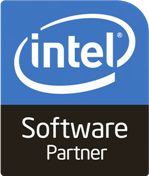Total Architecture:
|
 The technologies of BPM and SOA provide many opportunities to architect robust and flexible information systems. However, those same technologies are just as often used to re-implement the rat’s nest of systems they are designed to replace. So just how should these technologies be applied to achieve their expected benefits? This workshop provides an he answer to this question. The answer begins with the recognition that business processes and information systems have become so intertwined that it is no longer possible to design one without the other. Projects must address the total architecture: business processes, people, information, and systems. It is in this context that we explore the architectural opportunities provided by SOA and BPM. Recognizing that a service provides no value until it becomes an operational part of a real business processes, we consider the role that services should play in the total architecture. We examine the architectural evolution of the service concept, the emergence of service mediation, and the need for federated service busses in the enterprise. We look at how service component architecture (SCA) provides increasing flexibility in both design and deployment of services. We look at how complex event processing (CEP) and master data management (MDM) fit into the total architecture. We look at the conduct of projects and consider an efficient approach to designing business processes and systems concurrently rather than sequentially (as is traditionally done). We see how a perspective of enterprise architecture as a dialog between business processes improves our understanding of the true scope of each project. Finally, we examine some of the organizational issues involved in conducting projects whose scope encompasses two or more systems or organizations. We identify the coordination that is required at both the project and enterprise level to realize the expected SOA and BPM benefits. We conclude with some suggestions as to how this coordination can be achieved in practice. Logistic: Duration: 2 hours Workshop is free for conference participants, registration required. |
| Author’s appeal
|
Lecturer: Paul C. Brown Dr. Paul C. Brown is a principal software architect at TIBCO Software Inc. and the author of Succeeding With SOA: Realizing Business Value Through Total Architecture and Implementing SOA: Total Architecture In Practice. His model-based tool architectures are the foundation of a diverse family of applications that design distributed control systems, process control interfaces, internal combustion engines, and NASA satellite missions. Dr. Brown’s extensive design work on enterprise-scale information systems him to develop the total architecture concept: business processes and information systems are so intertwined that they must be architected together. Dr. Brown received his Ph.D. in Computer Science from Rensselaer Polytechnic Institute. |

SECR 2009 is over. To learn about current SECR please visit www.secrus.org.


















